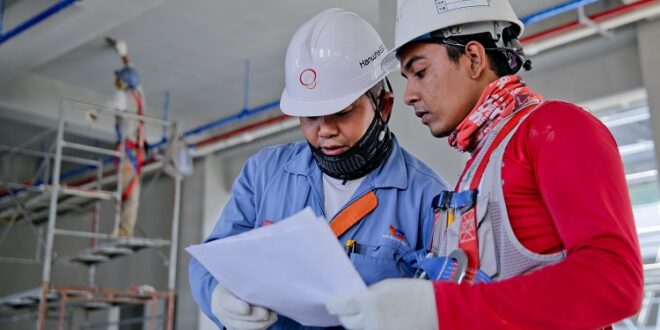When it comes to handling pressurized cylinders, safety should always be the top priority. You must follow safe handling procedures at all times to prevent dangerous accidents. Regardless of whether the cylinders are empty or full, they can still pose a risk if not properly handled. With the right protocols, companies can minimize risks and properly manage with guaranteed results.
1. Read the Product Information Before Using
A key step in ensuring safe handling is thoroughly reading the product information before use. This includes learning how the cylinder operates, ensuring the proper fuel is used, adhering to all safety regulations, and understanding the dangers of mishandling or using these containers incorrectly. Doing so will familiarize you with the item, its properties, its abilities, and any danger associated with it. Additionally, following instructions with cylinder services can help minimize the chance of an accident or injury. Cylinder services providers often provide comprehensive training to their employees to ensure these safety requirements are closely adhered to.
2. Inspect The Cylinder for any Damage Before Use
Before using any pressurized cylinder, thoroughly inspecting it is crucial for ensuring safety. Check the body and valve connections of the cylinder; Carefully examine for any anomalies like rust spots, dents, bulges, or leaks in these areas. Additionally, ensure that any hoses used to fill or empty cylinders are thoroughly inspected before use, as these can carry impurities and make a cylinder unsafe. Paying close attention to these steps can prevent accidents caused by faulty external parts and safeguard those handling pressurized cylinders.
3. Use the Correct Regulator for the Gas Type
One key factor in safely handling pressurized cylinders is using the correct gas regulator. Using a regulator incompatible with your gas type can result in leaks or even explosions, leading to serious injury. Additionally, you should always secure regulators tightly on the cylinder’s stem after use, as this will ensure safety when changing or disposing of cylinders further down the line. When selecting the right regulator for the job, be sure to carefully consider its characteristics and how they match the needs of your project.
4. Secure The Cylinder in an Upright Position
When working with pressurized cylinders, always ensure that the cylinder is properly secured upright on a stable base. This ensures that the gas in the cylinder does not escape unless deliberately released and prevents any sudden shifts due to displacement of air pressure, which can potentially cause serious harm. When transporting cylinders from one place to another, it is equally important to secure them properly so they cannot tip over or roll away. It is also wise to use straps that can tightly bind the cylinders together, allowing them to be safely transported with minimal risk. Understanding how to safely handle pressurized cylinders is key for anyone working with industrial gases, so following the above guidelines helps maintain a safe workplace environment.
5. Wear Proper Personal Protective Equipment
Always wear protective gear such as broad-brimmed hats, eye protection, and long sleeves while handling pressurized cylinders. This extra layer of safety provides an added layer of protection in case of any potential shrapnel being released due to mishandling or equipment failure. In addition, workers must also be aware of their surroundings and take the necessary precautions to minimize any accidental contact with the cylinder or its components.
6. Use the Proper Tools
When handling pressurized cylinders, it is essential to use the right tools and equipment to ensure safety. The most important tool is a hand truck or dolly since this will help you move the cylinder with minimal risk of damaging it. Similarly, when returning the cylinder to its transport cradle, it is important to measure the gauge with an appropriate pressure gauge so that you can accurately determine whether it needs refilling or replacing. Remember, if used properly and safely, pressurized cylinders become essential equipment for any workplace.
Conclusion
Handling pressurized cylinders is a potentially hazardous task and should be done with extreme care. It’s important to recognize the full range of associated risks and take necessary precautions to keep everyone safe. Safety measures such as ensuring proper handling techniques, wearing protective equipment when necessary, conducting regular maintenance checks on pressure systems, using dedicated equipment to transport cylinders, and properly storing gas canisters will help ensure a safe workplace environment.
 HammBurg Be informed with latest news, reviews, entertainment, lifestyle tips, and much more.
HammBurg Be informed with latest news, reviews, entertainment, lifestyle tips, and much more.




